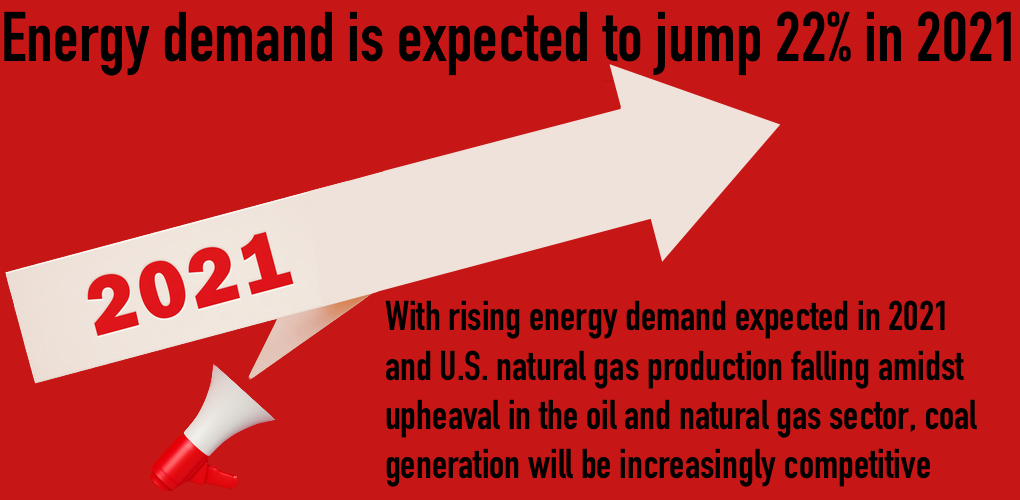
Electricity Affordability is Underpinned by Dispatchable Fuel Diversity
With the economy still reeling from the pandemic, U.S. electricity demand is down this summer. And while coal generation continues to play an essential role in meeting demand across the country, especially on scorching summer days, coal generation has borne the brunt of unique near-term market conditions. However, analysts are already predicting a bounce back for coal next summer, an important reminder of why dispatchable fuel diversity is so critical to ensuring affordability.
According to analysts at Platts, rising natural gas prices could see coal generation jump 22 percent year-over-year on the PJM grid, the nation’s largest. With rising energy demand expected in 2021 and U.S. natural gas production falling amidst upheaval in the oil and natural gas sector, coal generation will be increasingly competitive.
The competition between natural gas and coal has long benefitted consumers. The balance of dispatchable fuel sources has meant that as the price of one fuel rises, the other fuel has picked up increased market share, holding power prices in check and ensuring a reliable and affordable supply of power.
That fuel diversity has been slipping away as baseload coal and nuclear power plants are forced off the grid by a market incapable of properly valuing the balance and fuel security they enable. Without smart policy to ensure balance remains, consumers could soon feel the full brunt of fuel price spikes on scorching summer days or on bitterly cold ones when the natural gas transmission and distribution system can’t keep up with demand.
The last thing the economy and consumers need is spiking energy prices. Millions remain out of work, and millions more are struggling to pay the bills and keep the lights on. According to recent polling, nearly half of Americans are concerned about paying household bills, including electricity bills. A staggering 85 percent of Americans are concerned with rising electricity rates. Helping families weather the economic storm should mean a recommitment to energy affordability – affordability that has always been supported by fuel diversity.
In regions where fuel diversity is now gone, such as New England, consumers are saddled with some of the highest energy prices in the country. Winter electricity and natural gas price spikes are a constant fear. The New England grid operator is scrambling to address an alarming fuel security problem, going so far as to warn that 30 percent of the region’s natural gas generating fleet could be without fuel on particularly cold days. That’s generating capacity that millions of homes and businesses count on.
If New England’s overreliance on one fuel and an overstretched pipeline network has proven to be a model of what not to do, why are other grids, including PJM, seemingly determined to follow down the same path?
What is becoming abundantly clear is that what is in the best interest of consumers is rarely the top priority of utilities and their investors. Nor are the priorities of ratepayers adequately reflected in the policy proposals of lawmakers. Energy affordability, buttressed by a balanced fuel mix that leans on the fuel security and reliability of the nation’s coal fleet, must reemerge as a policy priority. Taking that balance for granted is a risk consumers and the economy simply can’t afford.
- On August 12, 2020
